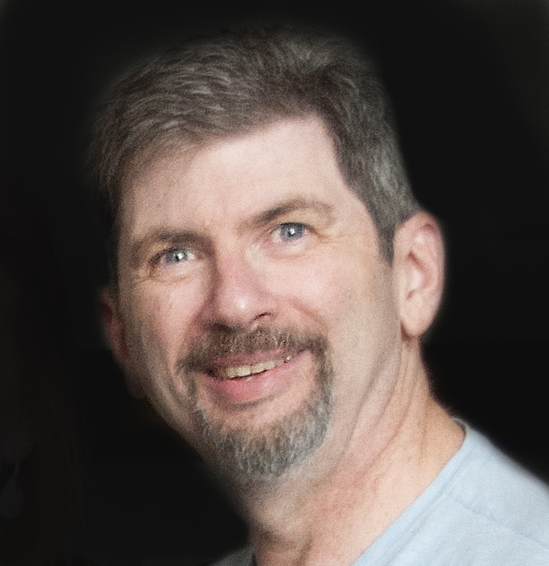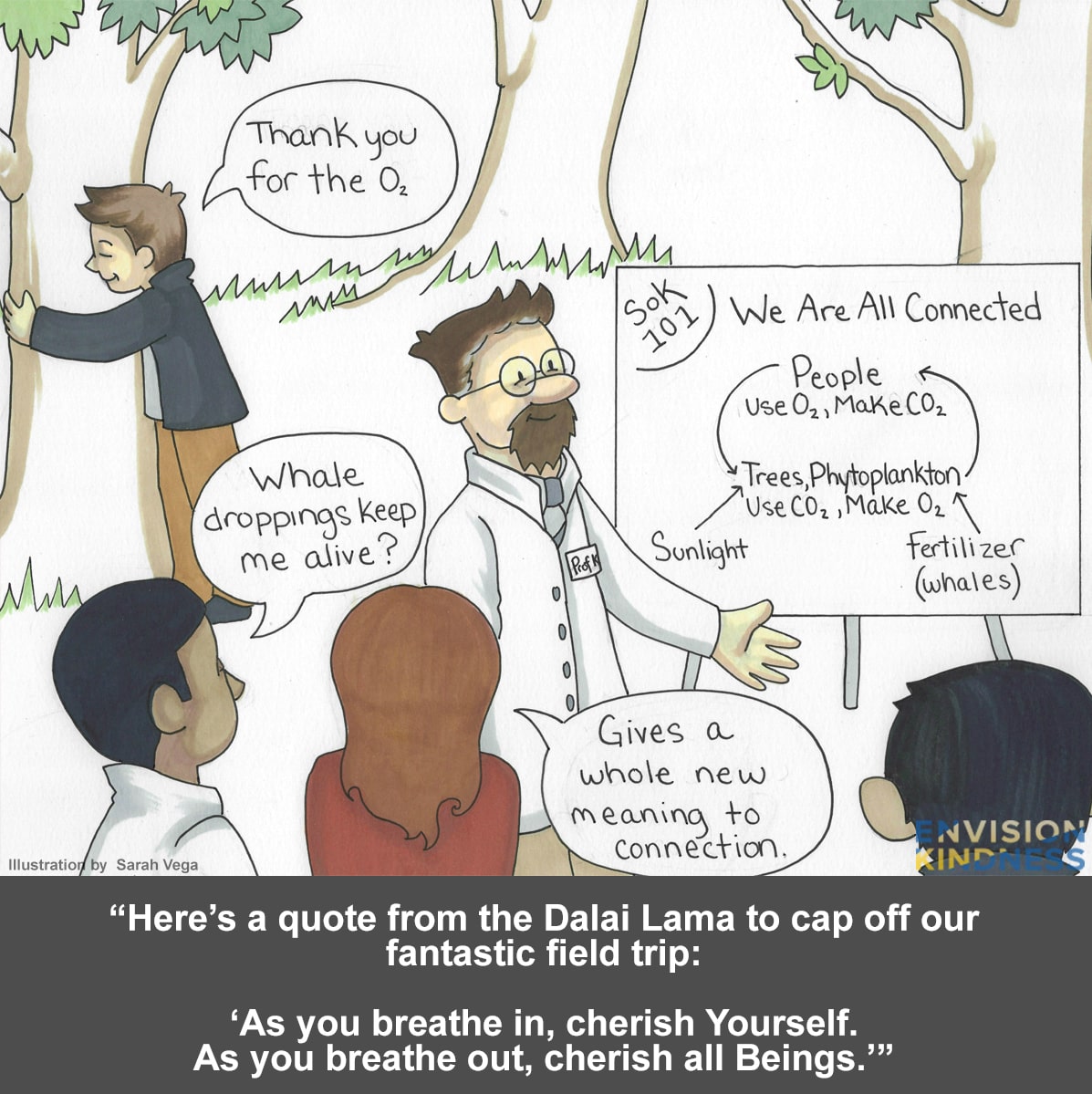In my exploration of how kindness connects people, it has become pretty clear how being kind to someone else uplifts both and creates a positive link between them. I have read many times how good people feel after helping someone through volunteering, or even holding a door (and felt it myself).
If pressed to explain why it feels good, it is clear that helping someone else (or simply seeing kindness) sets off a series of changes in my brain like the release of endorphins, the internal opiates. Spiritually, of course, helping someone is the right thing to do. The biological connection between my spiritual understanding and how I feel suggests that nature has wired me to do so; my body is reinforcing/rewarding these “right things” with pleasurable sensations. Similarly, the receiver also feels good because he or she has been acknowledged or valued[1].
It’s clear that helping someone else sets off a series of changes in the brain like the release of endorphins.
Acts of kindness therefore create meaningful connections between people. It is part of what I have called the kindness-connection cycle, in which acts of kindness connect giver and receiver to one another[2].
The focus of this class is the last arc of the kindness-connection cycle, which states that meaningful connection, in turn, increases kindness. The central idea is that when we truly understand that each of our lives is intertwined with so many others, kindness, compassion, and collaboration flow much more naturally.
Although we are unique individuals, our lives are part of a dynamic and vibrant larger network. What each of us does in that network influences many others and vice versa, i.e., we are in this together.
There are many different examples of how we are connected to each other. They include through economics, interpersonal interactions, workplace, community, family, etc.
We are connected to each other by the common biology we share.
One overlooked aspect of being connected to each other is the common biology that we share. It’s that common physiology that lets doctors and nurses go from one patient to the next to sort through their problems. For example, blood courses through our arteries and veins, is filtered by the kidneys, and is pumped by a heart that every day beats approximately 100,000 times[3].
There are many other systems that, with slight variation, function the same in healthy people, like the regulation of blood sugar, blood pressure, immune responses, etc. Although we may differ in outward appearance (height, body/facial shape, or skin color), in general, our bodies work the same way.
Beyond the systems that we have in common, we also actively share our biological lives with each other. Let’s focus on oxygen, one of the most abundant elements on the planet that is absolutely critical for survival. Inhaled oxygen (O2) is required to fully use calories and convert that fuel to a source of energy that cells can use (abbreviated “ATP”); carbon dioxide (CO2) is produced during that process and exhaled. Life (mammalian) is not possible without oxygen.
Let’s imagine that you and I are hiking a trail in the woods and stop to admire a vista. Much of the oxygen we are inhaling is probably produced by the trees and other plant life. Yet how did the tree make oxygen? As other hikers have gone through the forest, powered by sunlight the trees absorb carbon dioxide that the hikers have exhaled and transform that into cellulose (photosynthesis). O2 is then released from the CO2 that the trees have taken up (called the ‘oxygen cycle’). That is, oxygen is cycling between the hikers and plant life.
We share our biological lives with each other. Much of the oxygen we breathe is produced by trees, other plant life, and even each other!
This means that the oxygen that I breathe in to keep me alive was used by someone else in the past to help them live. And it will also be used by someone else in the future.
In fact, as oxygen is cycled but not destroyed and that each person needs around 500 or so liters of oxygen each day[4], multiple authors have speculated on the chance of having inhaled the same oxygen molecules as from Julius Caesar, Abraham Lincoln, Martin Luther King, Jr., or any other historical figure[5]. The bottom line: all of our lives depend on sharing and that this sharing extends across time.
It also robustly shows how we are critically connected to trees and other plant life. Without plant life, oxygen wouldn’t be produced and carbon dioxide wouldn’t be cleared. And since about half of the oxygen on Earth comes from phytoplankton in the oceans[6] this means that our oxygen dependent lives are also tied to the ocean. Phytoplankton, in turn, depend on waste from sea life like whales as well as how the whales stir phytoplankton in the ocean[7].
When something disrupts these cycles, like deforestation or whale hunting, we share in the problems that follow. And when we protect and nourish them, we honor their significance and are rewarded for it. What goes around, comes around. Life is much more about cycles rather than straight lines.
When we disrupt nature’s cycles, we share in those problems with nature. When we protect and nourish them, we are rewarded.
Oxygen is just one of many examples that, by the nature of our shared biology, we are connected to one another. The same is true for nitrogen (found in protein and fertilizer), water, iron, and a host of other biologically essential factors that cycle. This gets more complex once we include the interactions with many other insects and animals that are necessary to keep the fabric of our interwoven network healthy and vibrant.
What does this teach us? It tells us that our lives are more intimately connected than we might ever have thought. On a first level, it teaches that sharing (kindness and cooperation) is actively required for living beings to survive.
On a second level, we are deeply connected to the sources of replenishing oxygen in a reciprocating, cooperative way. Without them, we would not survive. And as those systems also make use of carbon dioxide to survive, in turn, we are part of sustaining their lives. Short-sighted selfishness that overuses or abuses a component of the cycle will come back around to affect us.
When one tugs at at a single thing in nature, you’ll find it attached to the rest of the world.
But the cycle is fragile; without us doing the right thing to responsibly maintain our part of a mutually nourishing cycle, it can fail. Doing the right thing honors two principles: being kind to and respecting the roles of other members of the cycle, and being kind to ourselves to sustain our own well being.
The eminent conservationist John Muir[8] wrote: “When one tugs at a single thing in nature, you find it attached to the rest of the world.” That is, we are all connected.
In kindness,
David (Prof K)
Originally published at www.envisionkindness.org.
[1] Mind the ancient adage that the “giver benefits more than the receiver.”
[2] See SoK #3 for more on this. http://www.envisionkindness.org/science-of-kindness/
[3] At 80 beats per minute
[4] Depends on activity and body size; think about more than 500 1 liter bottles of oxygen (not air).
[5] https://www.sciencefocus.com/planet-earth/are-we-really-breathing-caesars-last-breath/
[6] https://news.nationalgeographic.com/news/2004/06/source-of-half-earth-s-oxygen-gets-little-credit/
[7] https://blueocean.net/whale-poop-can-save-world/
[8] And early promoter of our National Park system


